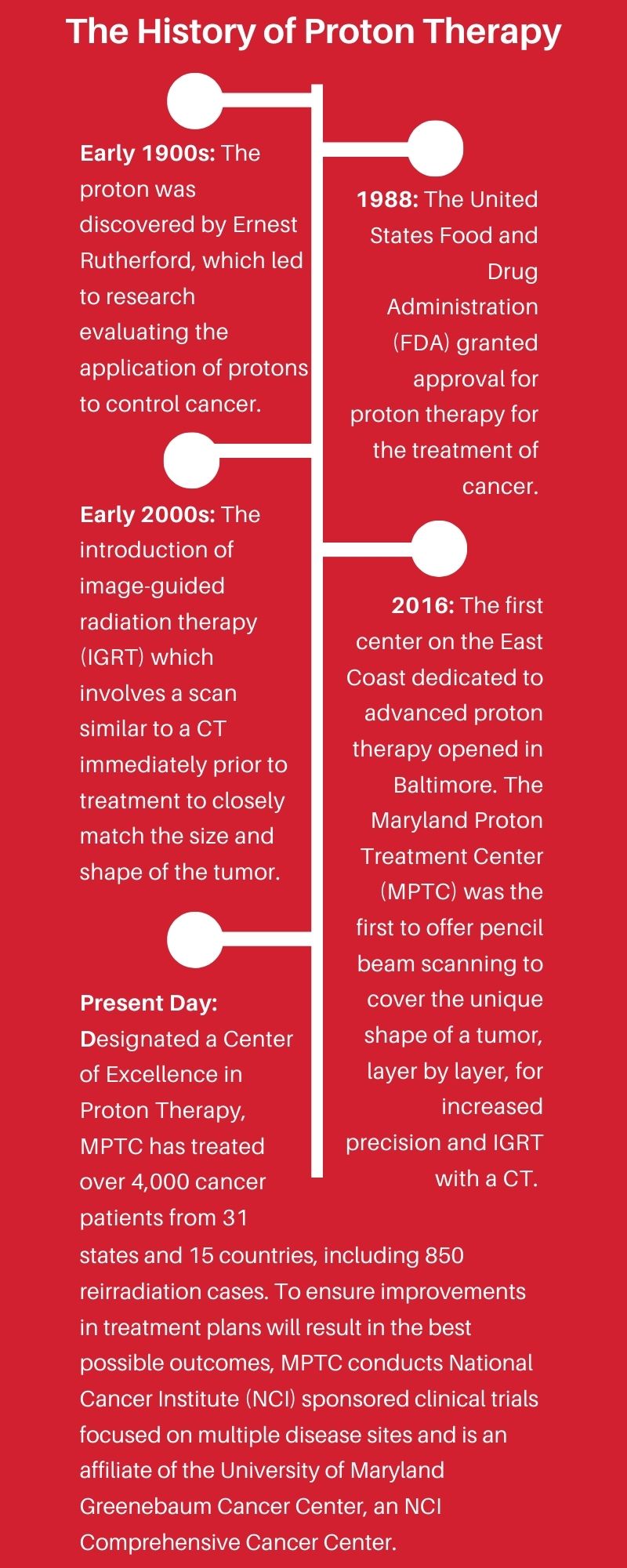Advances in Proton Therapy in the Treatment of Cancer
February 20, 2023
The number of people diagnosed with cancer continues to rise each year. According to the American Cancer Society, 1.9 million new cancer diagnoses were expected in 2022, an increase of 6% from 2020 projections and 10.5% over 2018 figures.
While cancer rates continue to climb, advances in treatment options are improving quality of life and affecting the reduction in mortality rates across the country. An American Cancer Society study revealed a 32% drop in the cancer death rate between 1991 and 2019, which translates to almost 3.5 million cancer deaths prevented.
One beneficial tool in the fight against cancer is proton radiation therapy. This treatment is being utilized more often to target tumors near critical organs and as a secondary option for recurrent cancers already treated with traditional photon radiation therapy. Overall benefits include improvements in quality of life and a lowered secondary cancer risk of 26-39% as compared to traditional radiation for adult and pediatric patients.
Non-invasive, painless and well tolerated by patients, proton therapy is completed in fewer treatments than traditional radiation. It serves patients with an accuracy of ±1 mm and requires only minutes to administer.
Dr. William Regine
Executive Director of the Maryland Proton Treatment Center
Professor and Isadore & Fannie Schneider Foxman Chair, Department of Radiation Oncology, University of Maryland School of Medicine
This limits the side effects due to exposure, both in the short term and long term. Today, roughly 20% to 30% of patients whose tumors are located near vital organs like the brain, heart, lungs, bladder and rectum undergo proton therapy, which directly administers positively charged particles to the tumor. With proton therapy, we can implement a larger targeted tumor dose while initiating a dramatic reduction in toxicity to nearby tissues and organs as compared to photon radiation, which can result in long-term damage.
Clinical Benefits with Reduced Side Effects
Patients who undergo traditional photon therapy may experience temporary and long-term side effects as well as increased risk for secondary cancers.
With proton therapy, patients experience less side effects enabling them to maintain their quality of life throughout their treatment. After several treatments they may experience fatigue and a sunburn-like redness or soreness in the area where the beams were directed. However, rarely affecting their ability to perform activities of daily living, they can return to work and resume normal activities the same day. Multiple studies, including one from the University of Pennsylvania, have shown that more than 90 days post-treatment, patients experienced a two-thirds reduced risk of side effects as compared to patients undergoing photon therapy.
Amplifying the Benefits of Proton Therapy
New therapies, utilizing protons, often in combination with other modalities, are furthering success for patients.
Currently in Use
Hyperthermia offers an enhancement to therapy through the heating of tumors to 102 degrees prior to or following proton treatment. Combining hyperthermia with protons increases the effectiveness of the protons by enhancing blood flow and driving additional oxygen to the tumor. Maryland Proton Treatment Center (MPTC) is the first in the world to combine proton therapy and hyperthermia in the treatment of tumors in the same center. Success rates are tumor dependent, but the combined therapy is proven to increase the effectiveness of radiation therapy by causing tumor cell death, through inhibition of DNA repair and enhanced blood vessel perfusion.
Immunotherapy provides patients another treatment option to combat cancer cells in the body, particularly those historically treatment-resistant. Immunotherapy energizes the lymphocytes in cells that attack the tumor, and proton therapy is shown to reduce immunosuppression. We are teaming proton therapy with immunotherapy to enhance this immune response/attack on tumor cells.
Anticipated in the Future
FLASH is a novel radiotherapy modality based on dose delivery at an ultrahigh rate. The first preclinical investigation is underway to evaluate the effects of FLASH with proton therapy at MPTC, capable of delivering an ultrahigh dose in just a few seconds. This greater efficiency lessens the effects on normal tissue. Early results are indicating increased survival and no impact on surrounding tissue. Normal tissue toxicity studies have revealed a 25% reduction in fibrosis/radiation scarring and 35% reduction in dermatitis/skin reactions with FLASH versus conventional radiation delivery.




